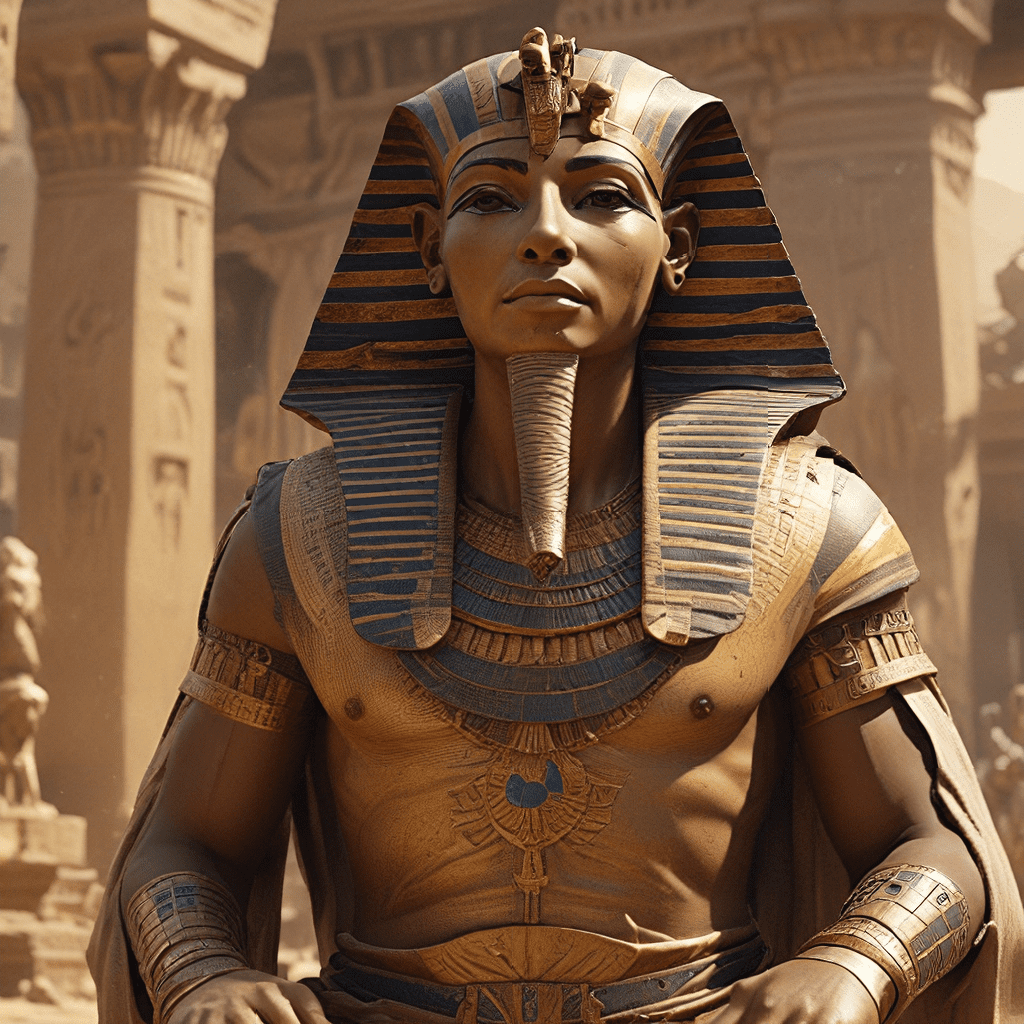The Pharaohs’ Decline and Fall: Understanding the End of a Great Dynasty
I. Introduction: The Rise and Glory of the Pharaohs
For over 3,000 years, the pharaohs ruled ancient Egypt, a civilization renowned for its magnificent pyramids, intricate hieroglyphics, and advanced knowledge. The pharaohs, believed to be divine kings chosen by the gods, guided their people through periods of prosperity, innovation, and cultural brilliance. Their rule brought stability, order, and a sense of unity to a sprawling empire that stretched along the fertile Nile Valley.
The rise of the pharaohs began with the unification of Upper and Lower Egypt, which laid the foundation for a powerful centralized state. The Old Kingdom (c. 2686-2181 BCE) witnessed the construction of the Great Pyramid of Giza, a testament to the pharaohs’ power and the ingenuity of their people. During the Middle Kingdom (c. 2055-1650 BCE), Egypt experienced a period of renewed stability and economic growth. The New Kingdom (c. 1550-1069 BCE) marked a golden age of Egyptian power and influence, expanding the empire’s boundaries and fostering trade with distant lands.
The pharaohs of the New Kingdom built impressive temples, monuments, and tombs, leaving behind a legacy of architectural wonders that continue to inspire awe today. But beneath the surface of this glorious era, forces were at work that would ultimately lead to the decline and fall of the pharaohs.
II. Internal Factors: The Seeds of Decline
While the pharaohs were seen as divine rulers, their power was ultimately grounded in the strength of the Egyptian economy and the stability of their society. As internal pressures began to mount, the foundations of their rule started to crumble.
a) Economic Instability
Egypt’s prosperity was built on the agricultural wealth of the Nile Valley. However, over time, economic disparities grew, and the pharaohs, often driven by grand building projects and wars, struggled to manage resources effectively. Corruption within the government also played a role, diverting funds from essential services and weakening the economy. As resources dwindled and the economy faltered, discontent grew among the populace.
b) Political Instability
The pharaohs were not always strong and decisive rulers. Power struggles within the royal family and court led to instability and weakened the pharaoh’s authority. The influence of powerful officials and religious leaders also challenged the pharaoh’s centralized control, creating a complex web of political intrigue that undermined the stability of the state.
c) Social Tensions
The gap between the wealthy elite and the common people continued to widen. Peasant farmers, the backbone of the Egyptian economy, bore the brunt of the economic hardships, facing increasing taxes and the threat of forced labor. Their dissatisfaction with the pharaohs’ rule eventually brewed into unrest and potentially even uprisings, further destabilizing the nation.
III. External Threats: The Growing Pressure
Internal challenges were compounded by external threats. As Egypt’s power waned, neighboring empires emerged as formidable foes, challenging its dominance in the ancient world.
a) The Rise of Foreign Powers
Empires like the Hittites, Assyrians, and Persians rose to power in the Near East, posing military and political challenges to Egypt’s supremacy. These empires boasted advanced armies and sophisticated strategies, threatening Egypt’s borders and undermining its sense of security.
b) Waves of Invasions
Egypt faced numerous waves of invasions from various groups throughout its history. The Hyksos, a foreign people, conquered Lower Egypt during the Second Intermediate Period (c. 1650-1550 BCE), disrupting the stability of the nation. The Assyrians, known for their military prowess, launched campaigns into Egypt, seeking to conquer its territories and resources.
c) The Shifting Balance of Power
The changing power dynamics in the ancient world strained Egypt’s position. As its neighbors grew stronger and more aggressive, Egyptian influence declined, making it more vulnerable to attack. The once-dominant empire found itself facing a growing number of threats from all sides, struggling to maintain its hold on power.
IV. The Decline of the New Kingdom: A Turning Point
The New Kingdom, once a symbol of Egyptian power and prosperity, started to unravel under the weight of internal and external pressures. The reign of pharaohs like Akhenaten and the rise of the High Priests of Amun marked a turning point in Egyptian history, signifying the waning of the pharaohs’ authority and the decline of the empire.
a) The Weakening of the Pharaohs
Akhenaten (c. 1353-1336 BCE), known for his radical religious reforms, attempted to introduce a monotheistic belief system, focusing on the sun god Aten. His efforts, however, alienated traditional priests and led to social unrest. His reign was marked by instability and a shift in power away from the pharaoh. Akhenaten’s successor, Tutankhamun (c. 1336-1327 BCE), reversed his father’s religious policies but could not fully restore the nation’s stability.
b) The Rise of the High Priests
The priests of Amun, the most powerful god in the Egyptian pantheon, gained significant influence during this period. They amassed wealth and power, challenging the pharaoh’s authority and accumulating control over religious institutions and resources.
c) The Collapse of Centralized Control
As the pharaohs weakened and the priests grew stronger, Egypt’s centralized control began to disintegrate. The empire fractured into smaller kingdoms, with local rulers vying for power. The once-unified nation lost its cohesion and succumbed to internal conflicts and foreign invasions. The fall of the New Kingdom marked a turning point in Egyptian history, leading to a period of instability and decline.
The story of the pharaohs’ decline and fall is a cautionary tale—a reminder that even the most powerful empires can succumb to internal divisions and external pressures. Though their rule would eventually come to an end, the legacy of the pharaohs continues to captivate and inspire us, leaving an enduring imprint on the world.




